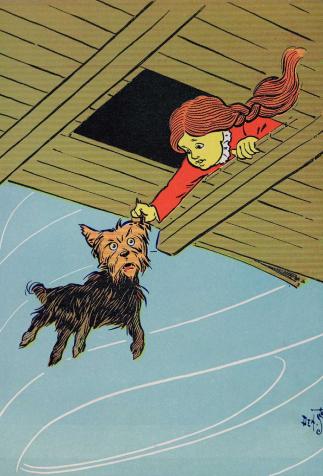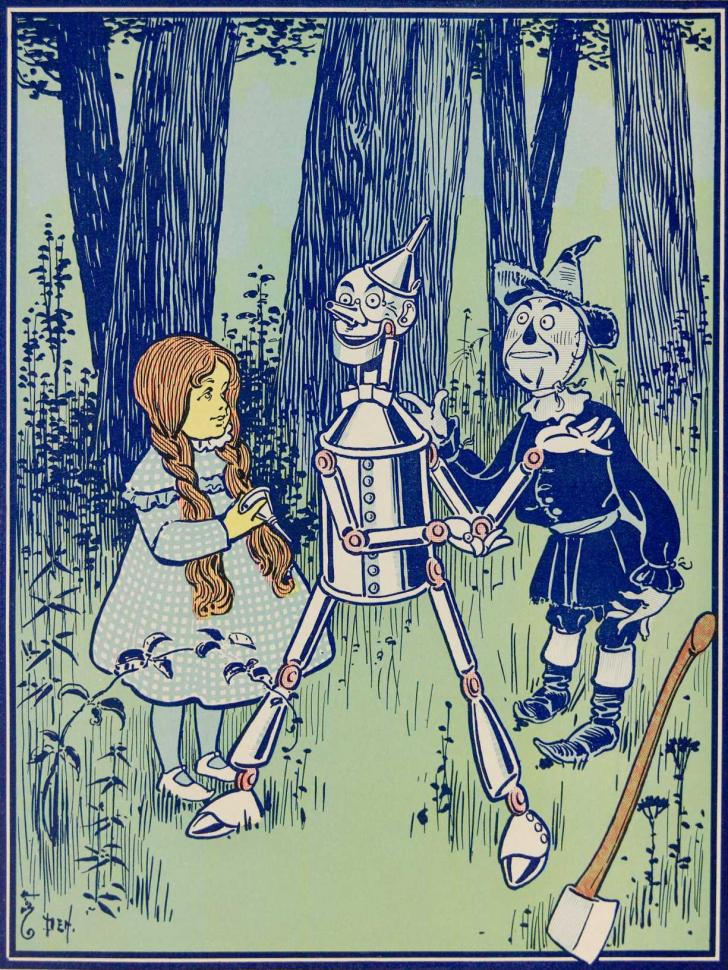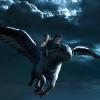The Wizard of Oz: A Technicolor Triumph
The Wizard of Oz, a classic American fairy tale, transports young Dorothy from her native Kansas to the “wonderful world of Oz,” a place that has fuelled our collective imagination since it was introduced.
Novels Galore
Lyman Frank Baum (1856-1919) was a pioneer in one of the earliest forms of the American cultural industry. A theatre buff who loved both melodrama and musicals, he was a jack-of-all-trades who founded, edited and wrote for newspapers and magazines; wrote scripts and screenplays, and, in 1914, founded a film-production company after having failed to launch an Oz-themed amusement park. But he is remembered for his career as a children’s book author, having written what he called in 1901 “American Fairy Tales,” and, above all, his biggest hit: the series of novels that started with The Wonderful Wizard of Oz, in 1900.
The series is emblematic of American fantasy, which was shaped from the start by commercial constraints and a multi-media environment. Volumes were churned out frequently and over a long stretch of time, with the world itself counting for more than any specific author. Dozens of Oz novels were published by three main authors: Baum wrote everything that was published for the first twenty years (including the posthumous fourteenth volume). Next came sequels by Ruth Plumly Thompson (from 1921); then John R. Neill, who had been the illustrator since the second volume (1939 to 1943. Later still, Baum’s great-grandson, Roger S. Baum, wrote eleven more volumes set in that world (1989 to 2006)!
Success on Stage and Screen
The book’s original success, which was due in part to W.W. Denslow’s famous illustrations and to a stage adaptation in 1902, has been revived regularly thanks to adaptations in other media. The blockbuster Wizard of Oz film directed by Victor Fleming for MGM in 1939 made a huge impression with its vibrant Technicolor and the beloved song, “Somewhere Over the Rainbow,” interpreted by Judy Garland. Then in 1978, Sidney Lumet did a film adaptation of the all-black Broadway musical The Wiz, which had opened at the Majestic Theatre in 1975. The film, which starred Diana Ross and Michael Jackson as Dorothy and the Scarecrow, was co-produced by Universal Pictures and Motown Productions. Since then, the musical comedy Wicked, which has been running on Broadway since 2003, offers spectators a chance to reconsider the story from the “Wicked” Witch of the West’s perspective. More recently, Sam Raimi’s Oz the Great and Powerful (2013) offered a prequel to the original Fleming film.
A Key Place in American Folklore
Omnipresent in popular culture, through more- or less-direct references to its characters and landscapes, Oz soon established itself as part of the young country’s own original folklore. Right from the prologue of the very first volume, Baum declares his intention to renew the fairy-tale tradition with more modern, up-to-date versions. He sets his story in a recognizable USA, the image of which he helped imprint on our collective memory. Running away from the hardscrabble Kansas farm where she lives with her adopted parents, Dorothy and her dog, Toto, are whisked away by a tornado, which deposits them on the Yellow Brick Road. Following it, they discover a land with imaginary geography, peoples and creatures that grow more colorful and profuse over each of the many volumes. The first friends Dorothy makes there – the Scarecrow, the Tin-Man and the Cowardly Lion – all incarnate the same logic of animating the inanimate, which is known to be one of the most characteristic features of children’s “magical thinking.” Dorothy herself incarnates values that are important to Americans: tenacious energy, love of the land and genuine sincerity… as opposed to the “humbug”-in-exile passing himself off as a wizard.







